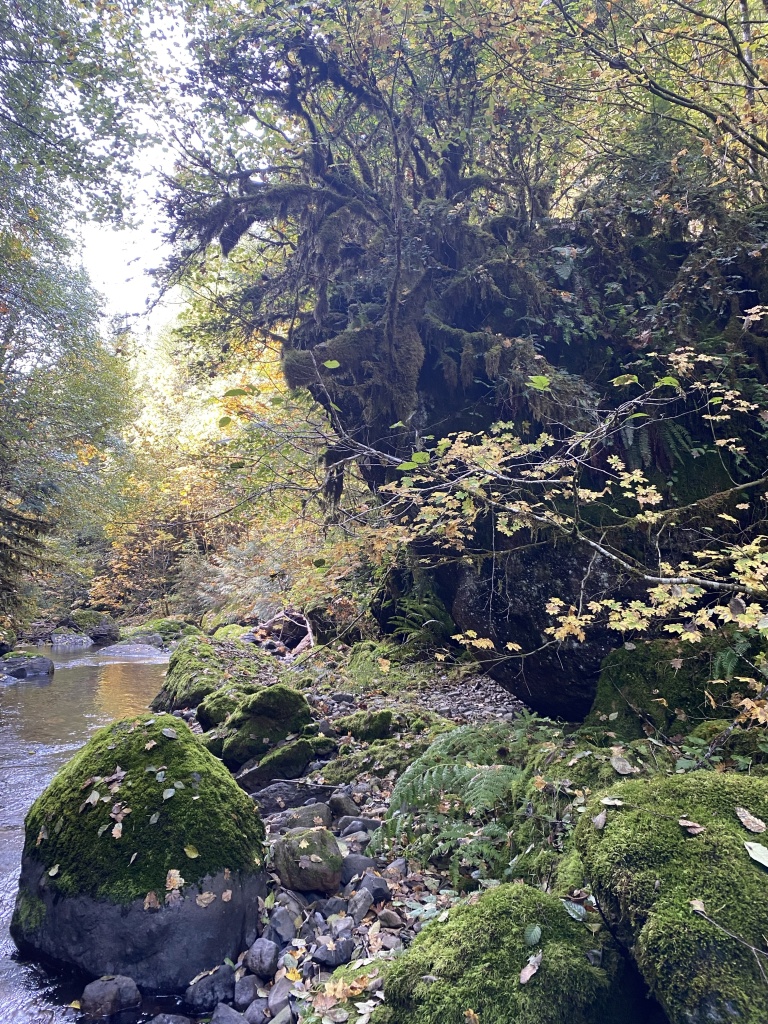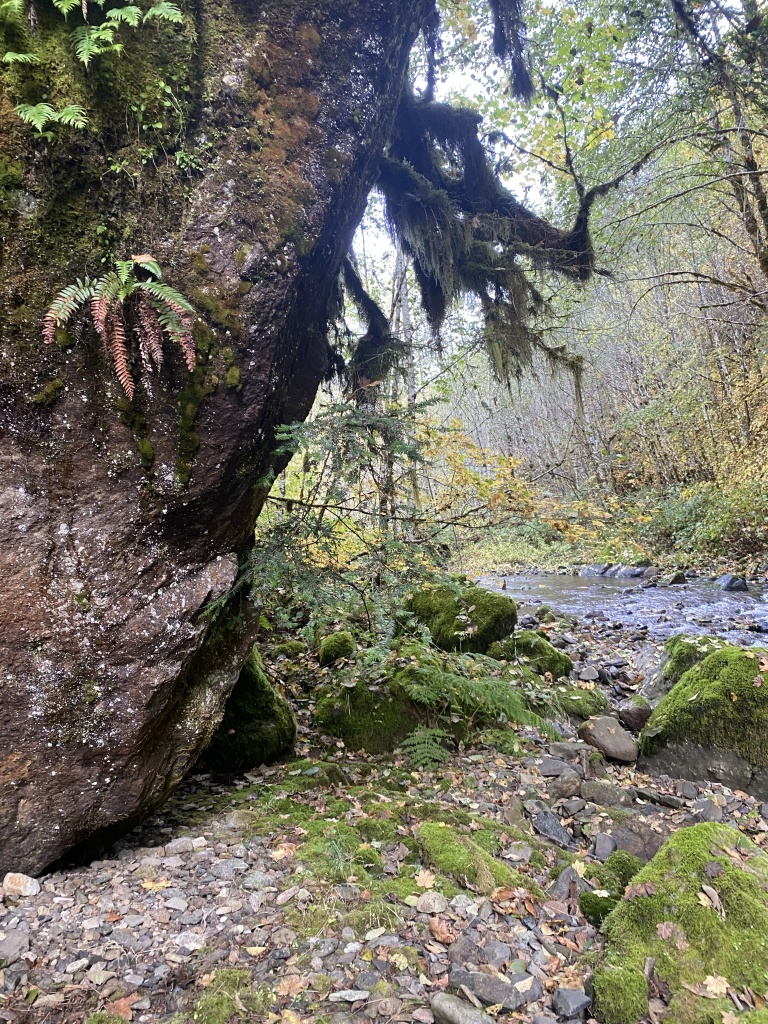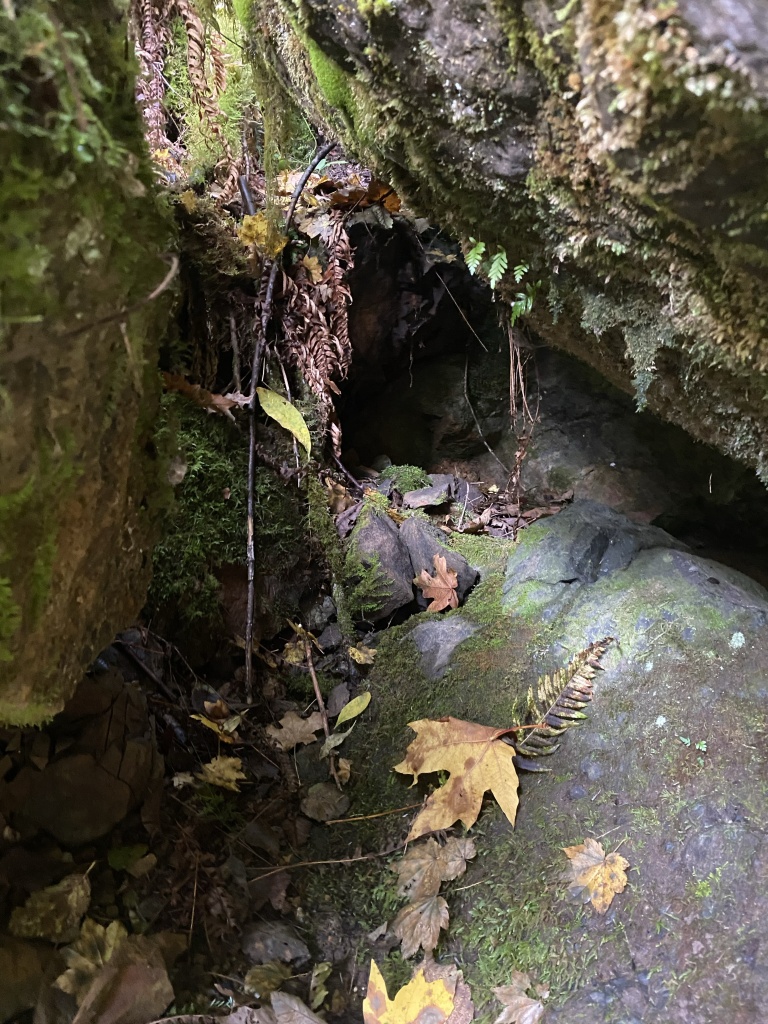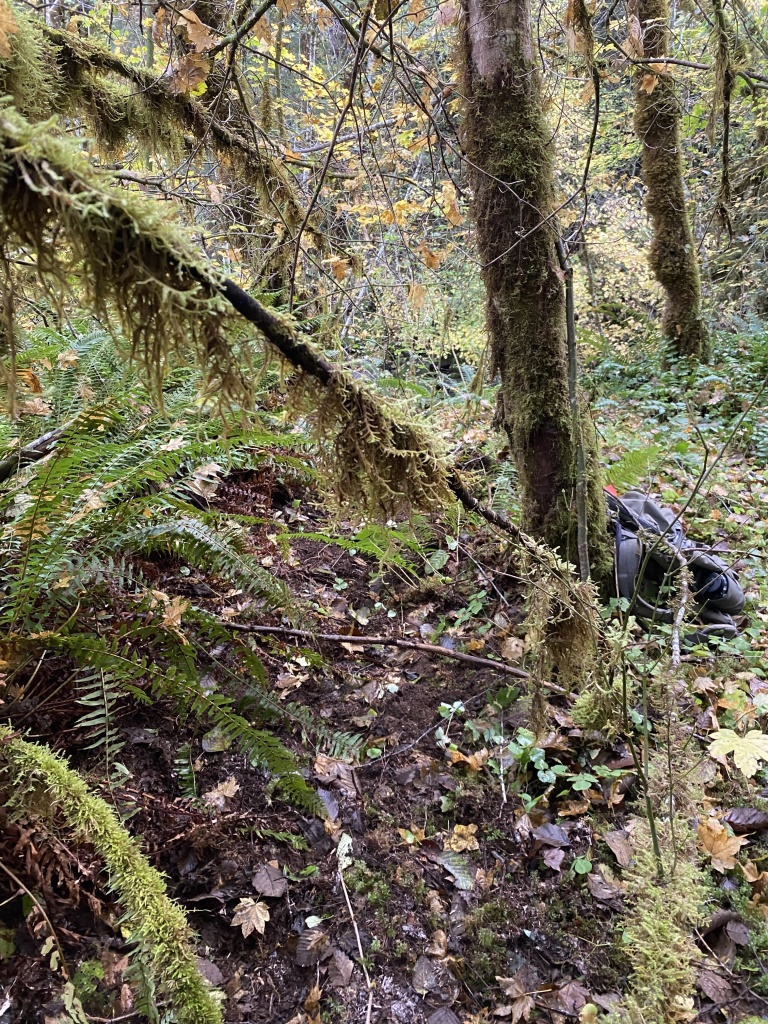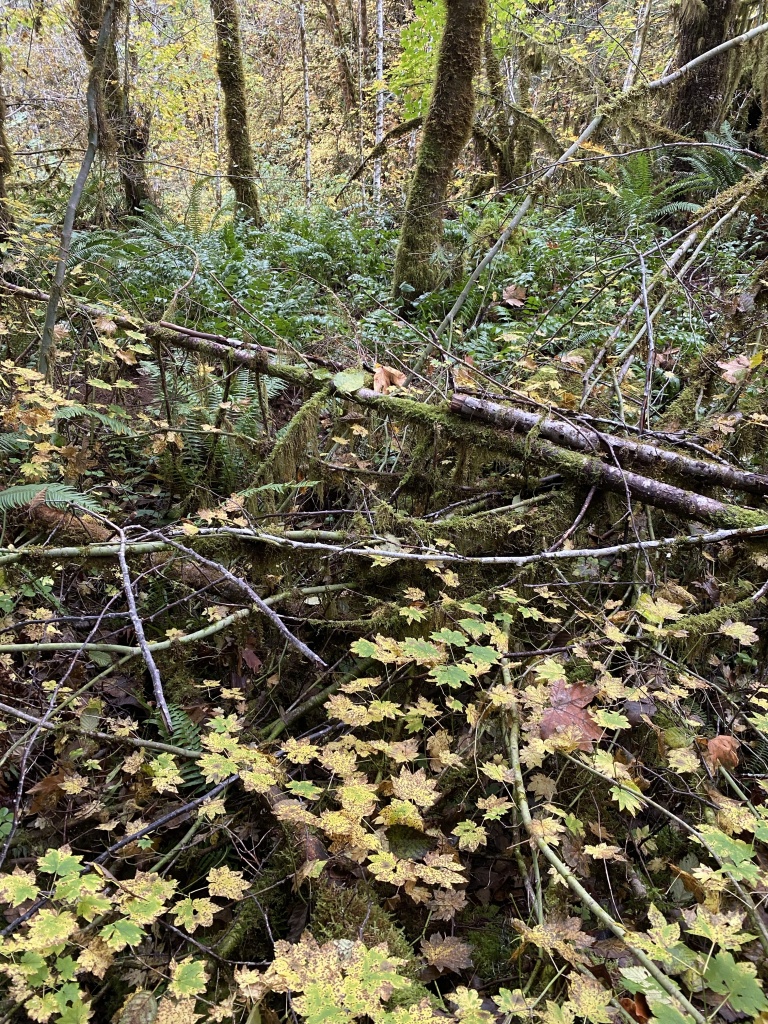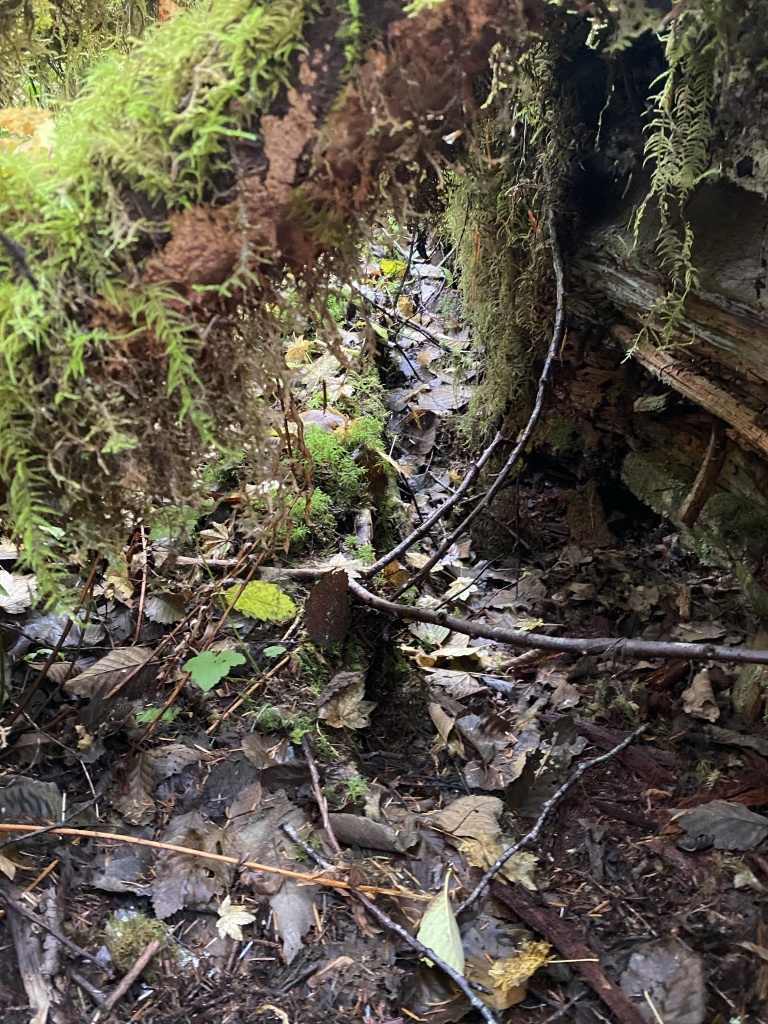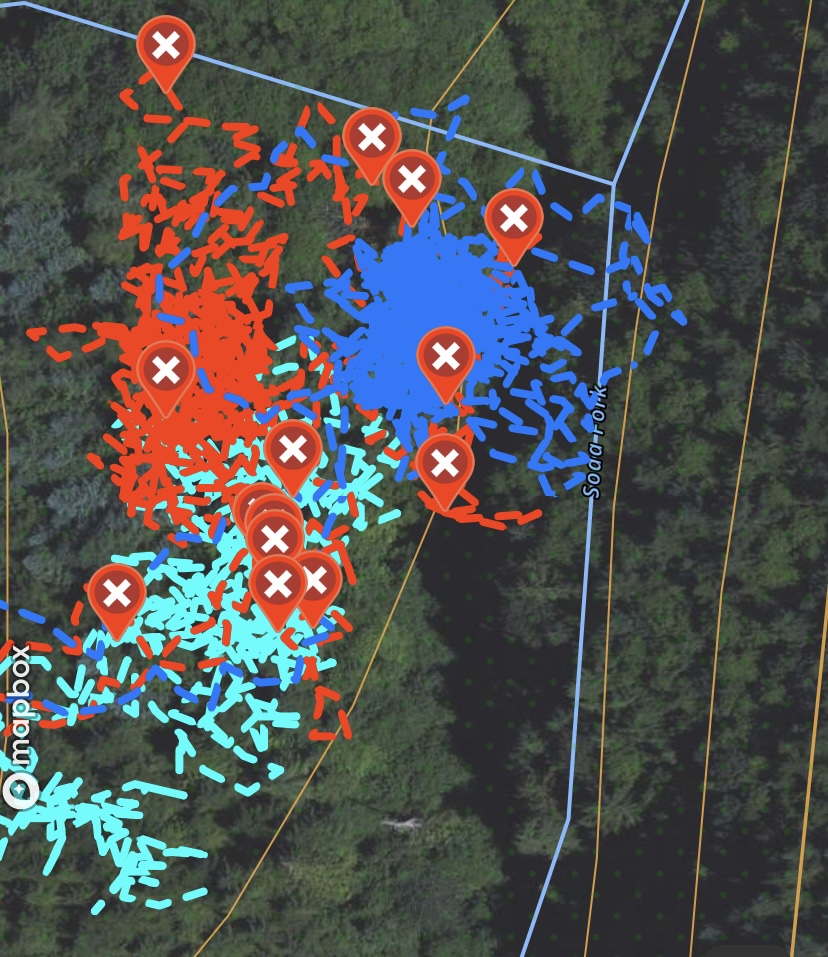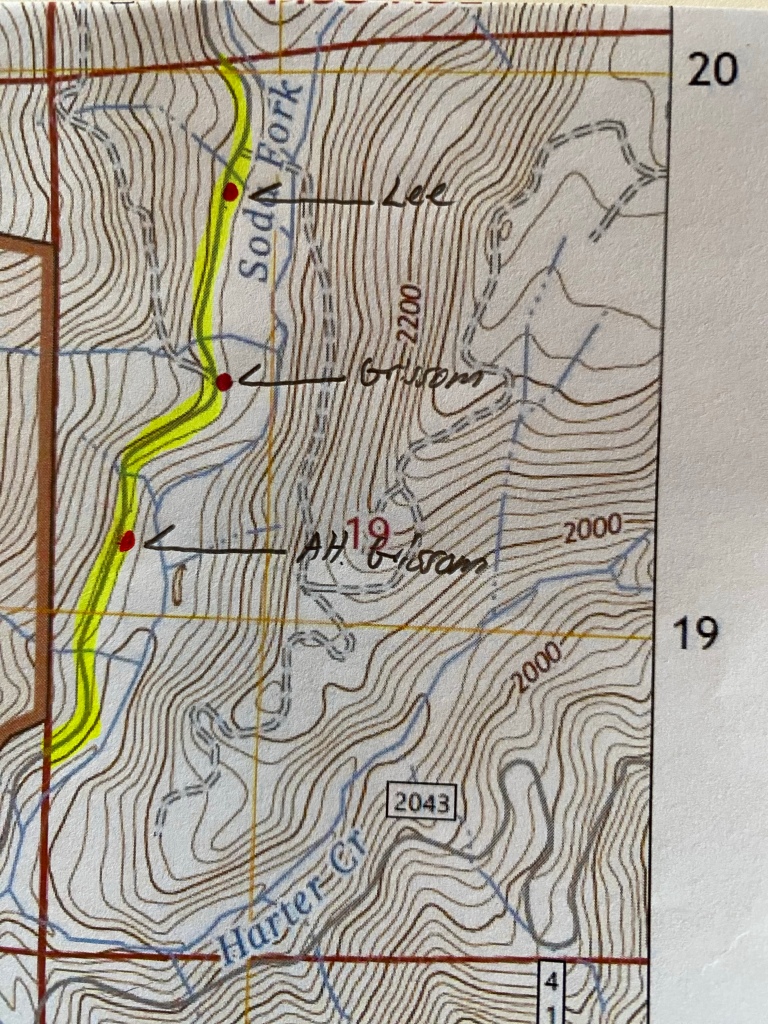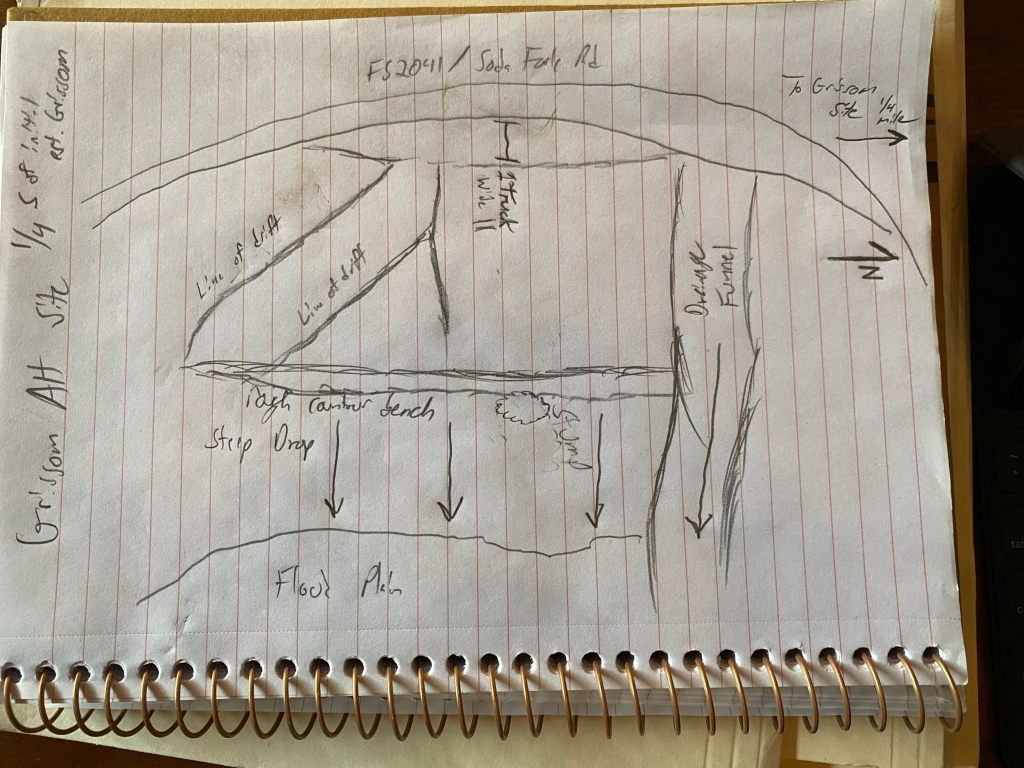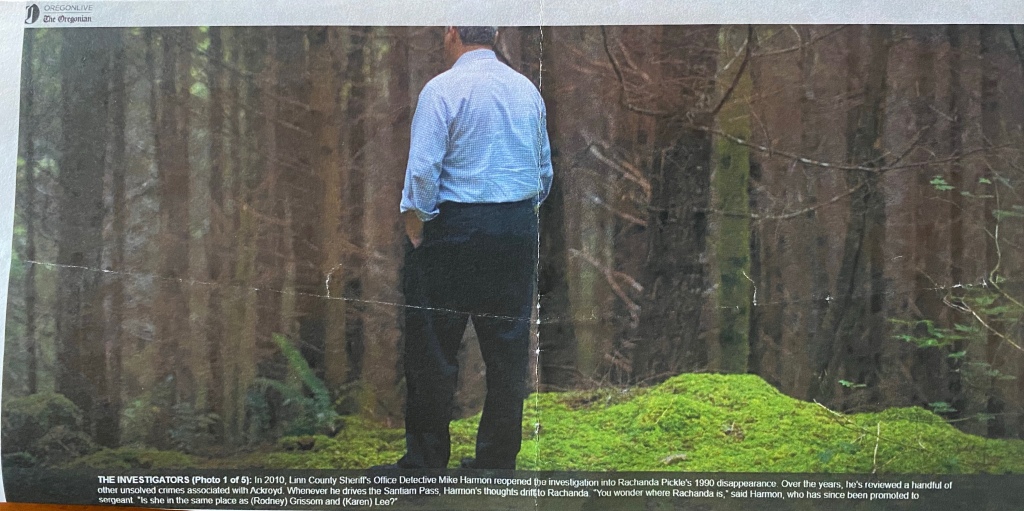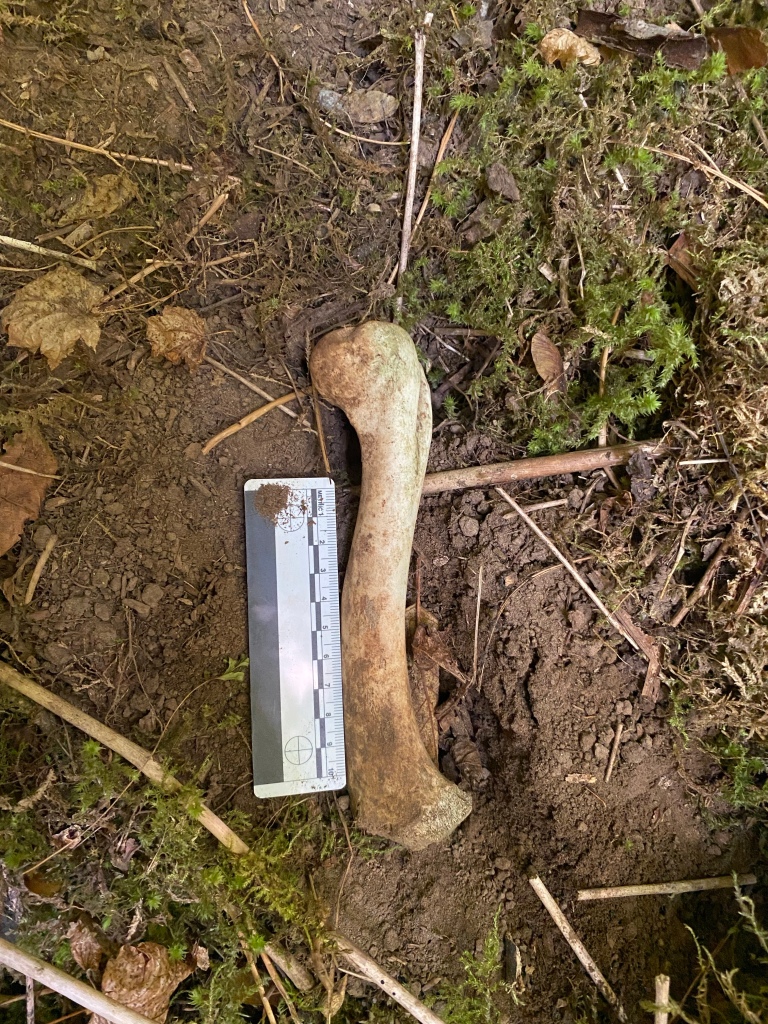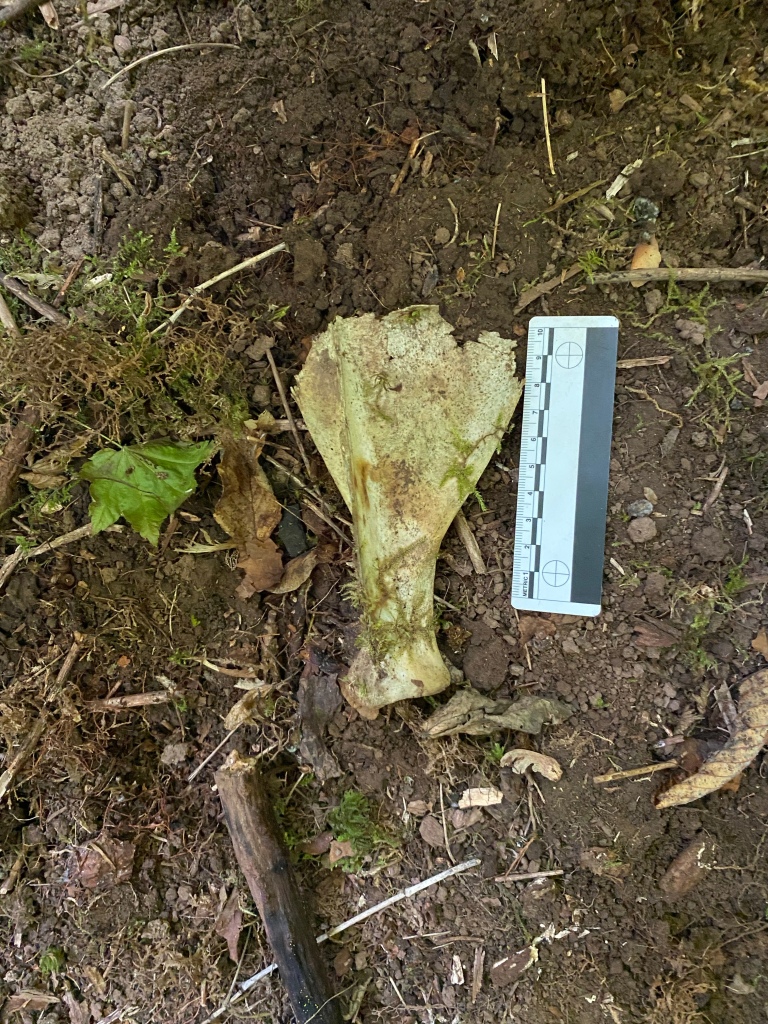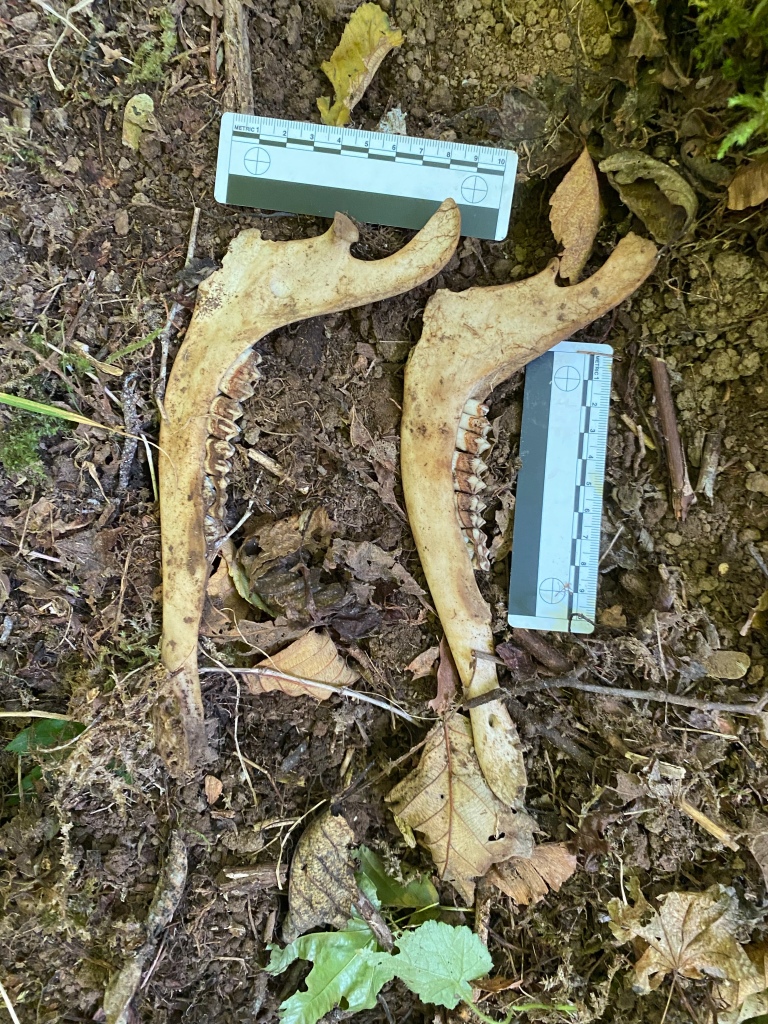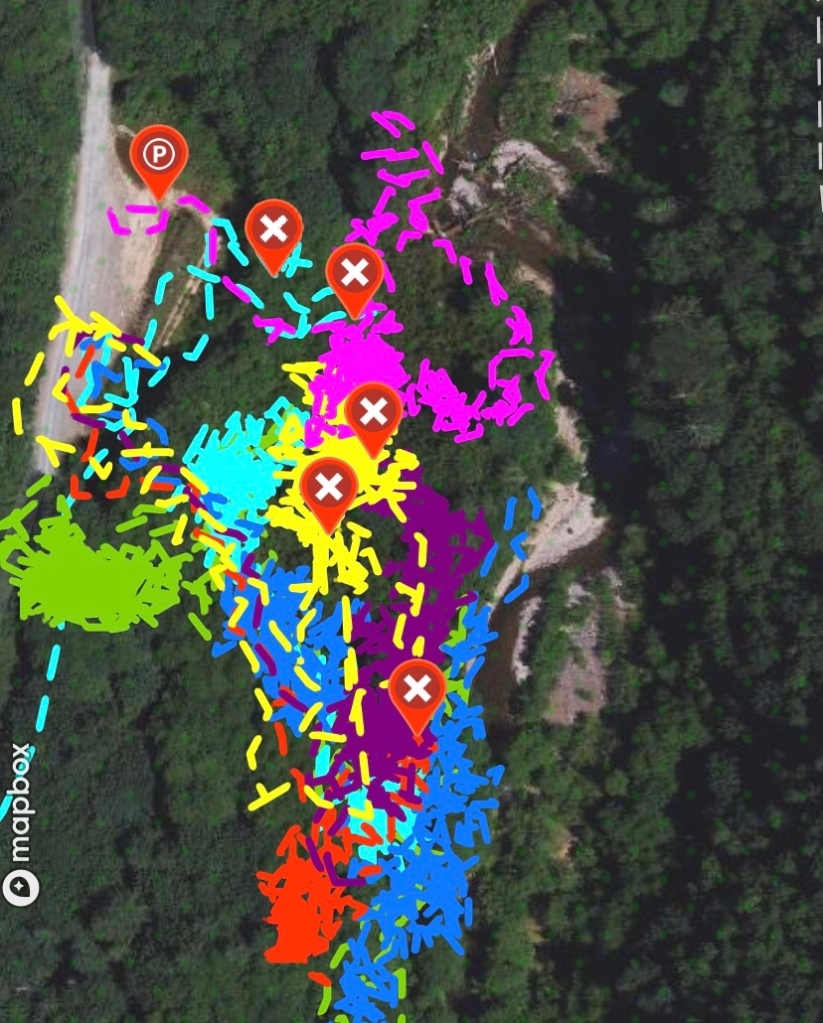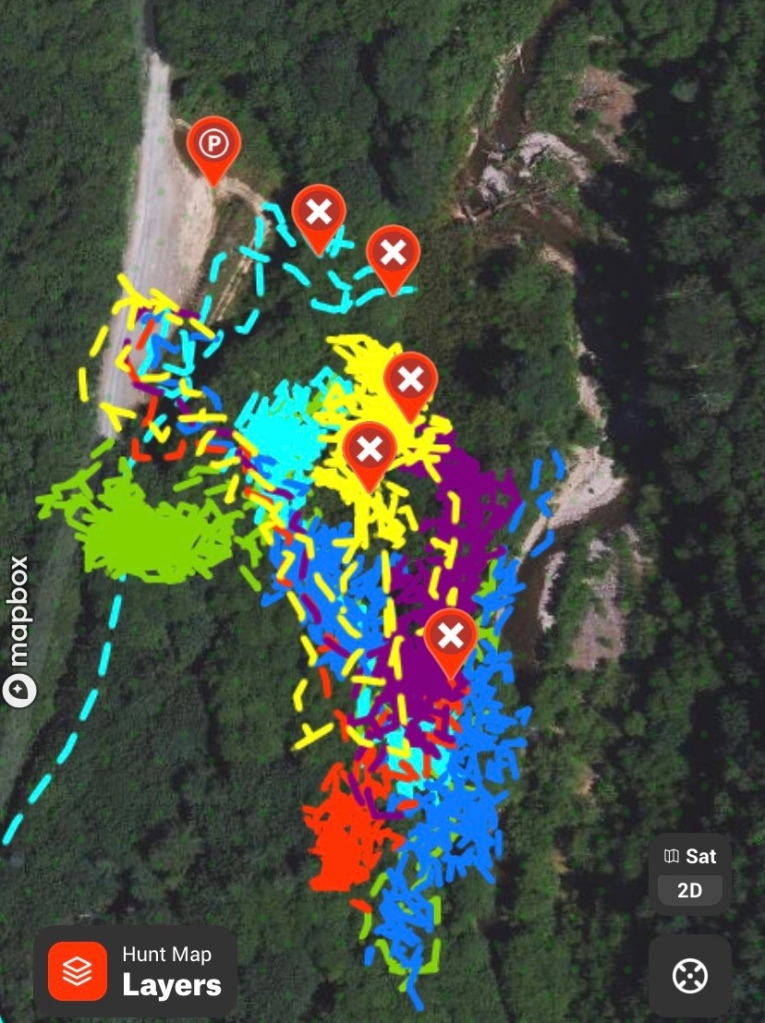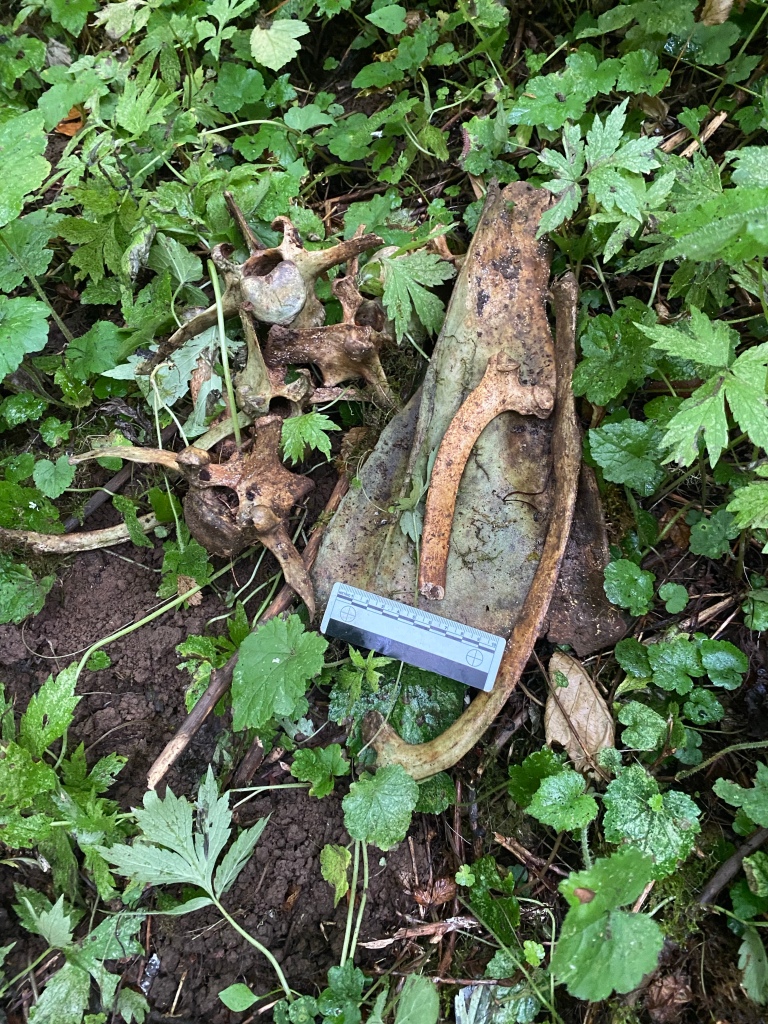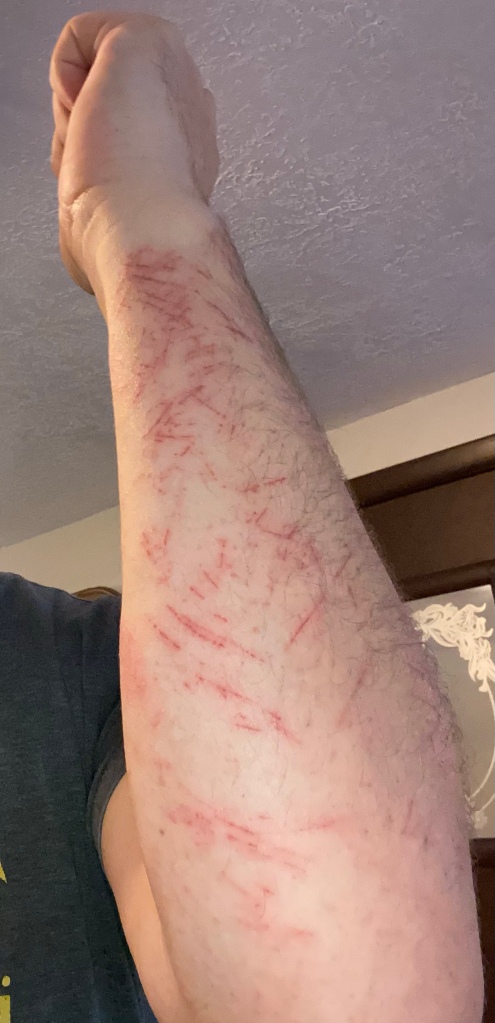I have taken a pause in on the ground searching for the winter. Until the weather improves in March / April, or we get an exceptionally fine stretch of decent weather, I’m focusing on desk research and re-examining assumptions and interpretations of the facts. This week I found an online repository of historical aerial surveys, and I bought the image for Upper Soda, Section 19.
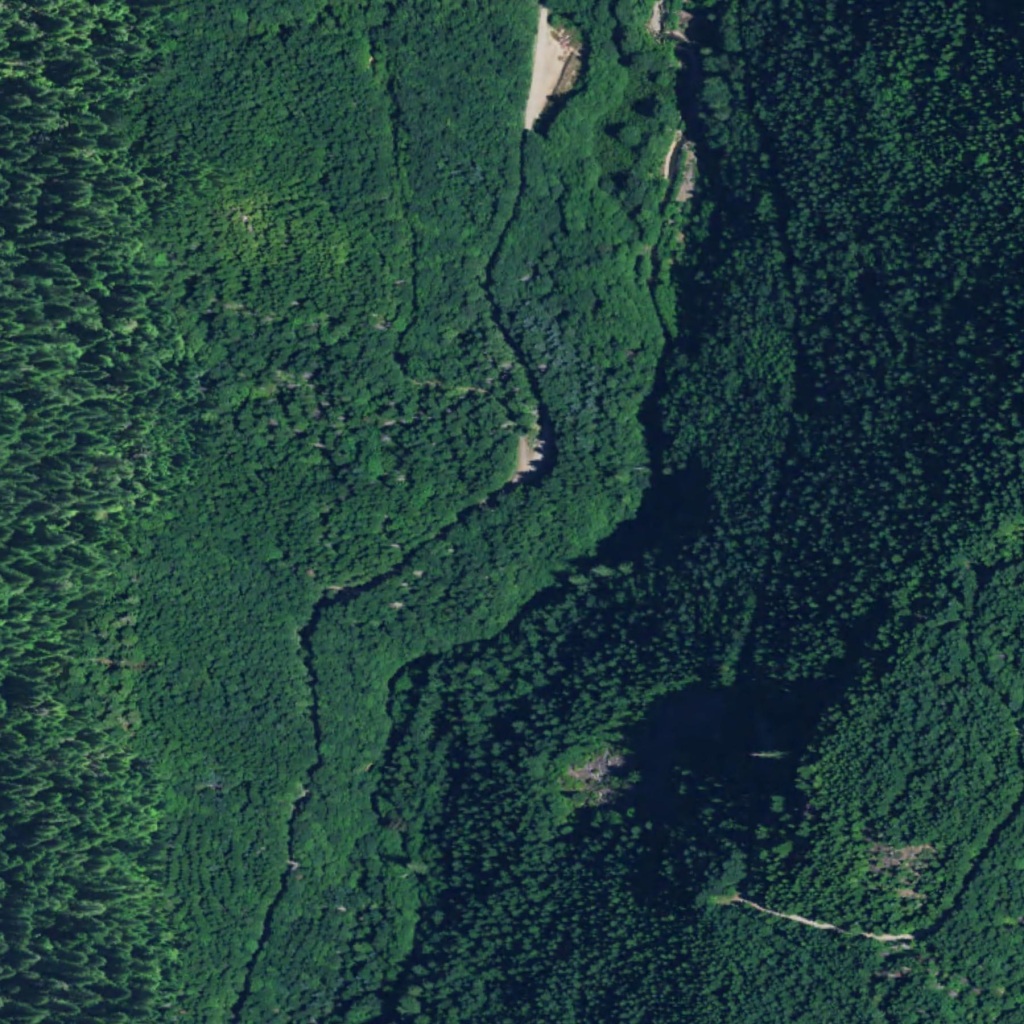
Above is the current aerial image for Soda Fork, Section 19. You can see the trace of Soda Fork Road (FS 2041), the clearing where the Lee site landing is, and at the top of the photo, the log yard area that I cleared this summer. A persistent question I’ve had is “what did this area look like in 1977” and this week I found my answer.
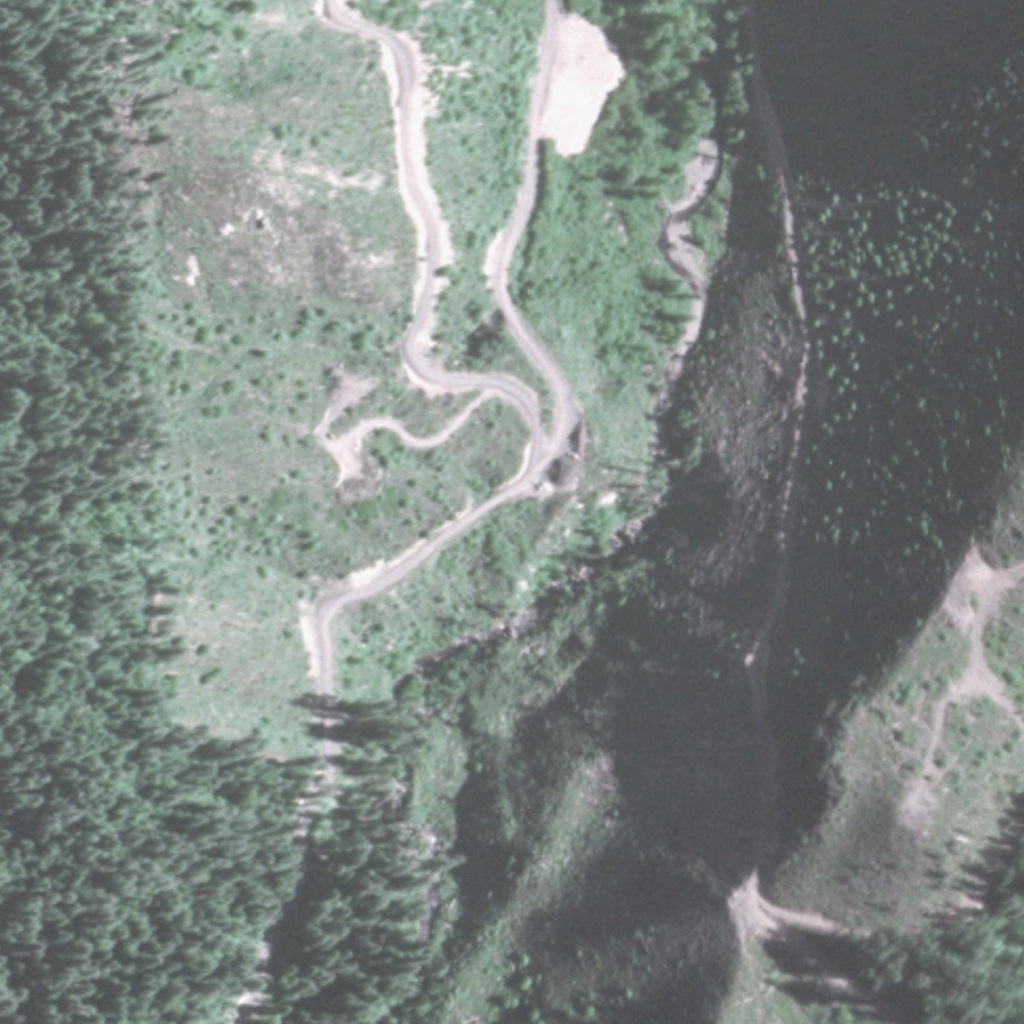
This photo depicts the same area, but with much less timber and vegetation due to logging operations. On the left of the image you can see the boundary line of the Menagerie Wilderness and the amount of clear cutting on both sides of Soda Fork Rd.
What can we learn from the 1982 image that we can’t from the 2020 image or being on the ground? Let’s start with what we can infer from the image.
- Based on the sunlight and relative dry appearance of the road beds, this was most likely taken in late spring, summer or early fall 1982.
- Based on the shadows the trees are throwing, it is mid-morning, and while the sun has risen above the ridge to the east of Soda Creek, sunlight is not hitting the west facing slope of the ridge.
- Overlaying the 1982 image with the current image, we can see that the road network is static and has not shifted over time.
- Let’s annotate the 1982 image with the crime scenes
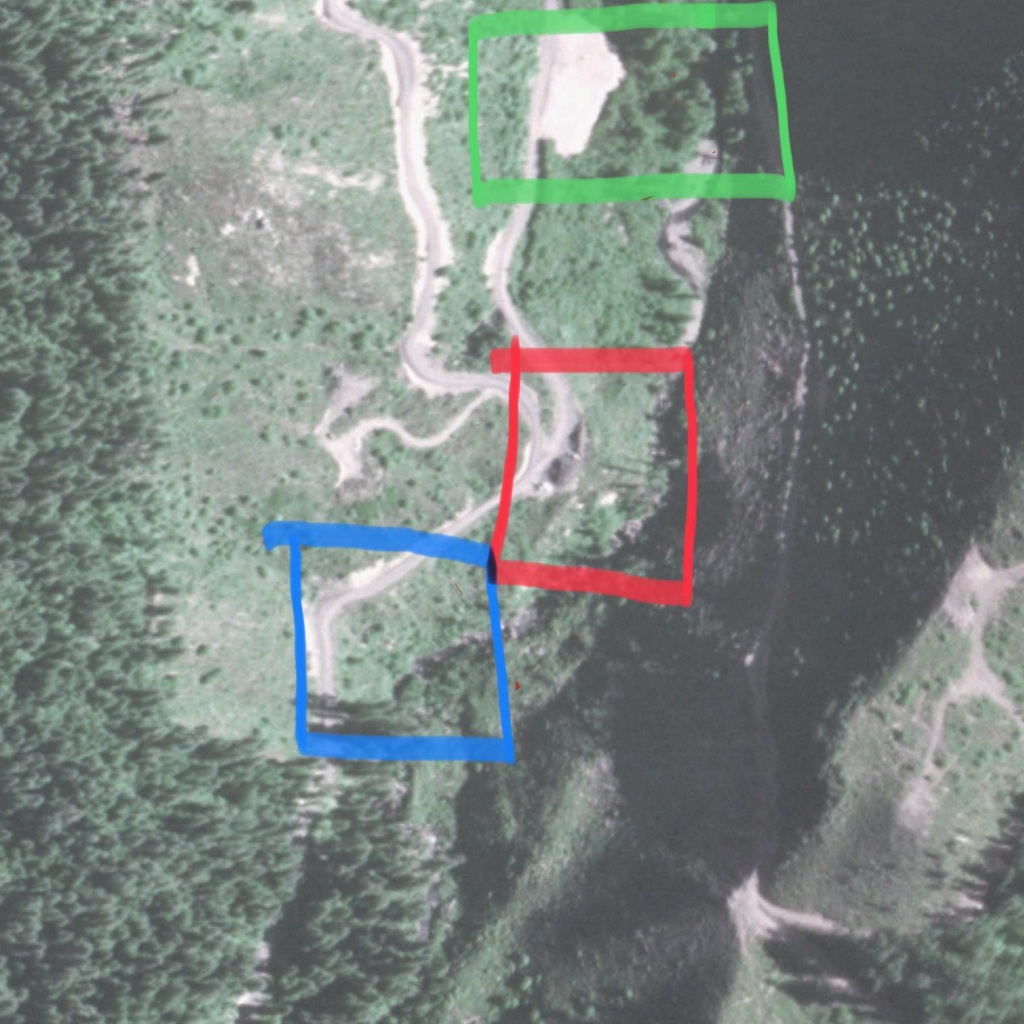
- We can see that the Log Yard (Green Box) is pretty much the same, although there is far less vegetation on the top of the berm.
- The Lee Site (Red Box) is very much the center of “logging operations” as noted in the 1977 reports on the finding of Karen’s clothing and bag.
- We can note two large piles of gravel or other loose bulk material stored at the landing.
- The Lee Site looks as though the timber has been thoroughly cut judging by how few shadows are being thrown between the creek bed and the landing. There looks to be about 3 tall firs remaining along the creek and a stand of timber to the southeast of the landing’s main gravel pile.
- Police and news reports state that Karen’s clothing and bag were found in an area of “second growth timber and thick vegetation”. Based on the 1982 image, there are only a few areas between the landing and creek that match that description.
- The Spring 2024 search will focus on the stand of timber to the southeast of the landing and the line of timber extending from that stand north and south along the creek.
- My last search of the Lee Site (21 October 2023) stopped on the edge of this timber stand. This is based on a comparison of my GPS tracks to this image. It may not be exact, but it is close.
- The Grissom Site is similarly harvested, with a stand of timber left along the creek bed and a stand on the hill side in between the Grissom Site and the Lee Site.
- Rodney Grissom’s clothing was recovered in November 1982. If this photo is from the summer of 1982, his clothing is present in the image, but the resolution is too poor to even try finding it.
